Few were surprised when Top Gun: Maverick, the highest-grossing movie of 2022 and one boasting great reviews, received six Oscar nominations — two more than its 1986 predecessor, which made a superstar of Tom Cruise.
The one Oscar nomination that may have surprised some was Maverick‘s nod for Best Visual Effects, if only because the subtle work done by VFX Supervisor Ryan Tudhope and his team often hides in plain sight, to the point where some might consider them “supporting visual effects” rather than the star of the show.
The Visual Effects Society was clearly impressed by the Top Gun sequel, as its VFX team was nominated in the main visual effects category at the VES Awards, and Maverick also struck a chord with the Academy, which bestowed an Oscar nomination on the film’s VFX team, though they’ll have to compete with the wizards behind Avatar: The Way of Water and a couple of superhero movies.
Below the Line spoke with Tudhope a few weeks ago, and he went into remarkable detail about the things his team was tasked with pulling off, and why Director Joseph Kosinski was the right man to lead everyone into aerial battle, as he entered the project with a clear creative vision that helped elucidate the VFX team’s assignment. For more on Top Gun: Maverick, click here for our earlier interview with Editor Eddie Hamiton.
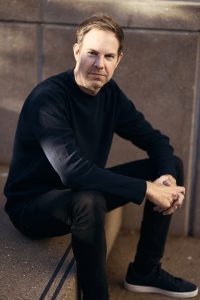
Below the Line: I spoke to Maverick Editor Eddie Hamilton and asked him about the VFX, and he gave me some great insights into the process, even though I still don’t fully understand the pipeline between VFX and editorial. Could you explain it?
Ryan Tudhope: It’s a tremendous collaboration, and I would say even more so, Editorial is one of our biggest clients in the visual effects world because it’s all about delivering a shot that works within the cut and feels like it expresses the action they want. In this case, especially those aerial sequences. Eddie and his team had, first of all, the tremendous challenge of going through hundreds and hundreds of hours of footage, and figuring out what shots were gonna be best and then, obviously, creatively, just coming up with these sequences that are such high-octane quick cuts. I think there were something like 3,000 cuts in the movie, which is just a tremendously high number, and it’s all that energy and action. I have huge respect for him and his team, and it was such a pleasure to work with them.
BTL: How did you originally get involved? Had you worked with Joseph Kosinski, Jerry Bruckheimer, or Tom Cruise before? How did you get brought into this?
Tudhope: No, this was the first project. We started talking to Joe really early on about how we might shoot this. [We] got his sense of what he wanted to accomplish, and started to understand the amazing support we were going to be getting from the Navy and understood the process that [he] and Claudio [Miranda] were going through, in terms of developing these various camera mounts on the jets, and engineering those challenges with the Navy. [We] jumped in, just eager to be involved as huge fans of both Joe and his work, and the original film. [We] started to demonstrate the specific methodology that we knew was going to be so foundational and critical to the visual effects work, which was this idea that we were going to take real footage of jets, and then change those jets into different aircraft to suit the needs of the story.
We found this footage on YouTube of [I think it was] an F22 doing this sort of maneuver in the air. We painted it out, removed it from the footage, and retracked a digital SU57 that we had created. It demonstrated this idea that we could use the lighting reference of the original jet [and] the performance of the original jet. The vapes that were coming off the wings were something that we were able to salvage and put our jet underneath and reference things like the afterburners, color-wise. It just gave us all this great information to work with and proved two things. It proved that the methodology was sound and something that we wanted to pursue, and it also showed that we were really enthusiastic and wanted to be involved.
BTL: What was your first meeting with Joe like? Had they already decided they were going to try to do as much as possible practically by having everyone flying their jets?
Tudhope: That’s what he pitched to Tom, just to get Tom involved. That was something that Joe was advocating from the very beginning. Certainly, before we really started talking about stuff, we knew that was our methodology, and that’s why we proceeded with that test, to prove that methodology was viable. Our conversations really were more about, ‘how do we leverage the support that we have from the Navy, [and] all these camera mounts that we’re engineering on these jets and the various camera platforms we’re going to have and the naval assets that were going to be made available to us. All those sorts of things that are such a luxury when you’re trying to make a film like this, you usually don’t have all of that. And no one probably ever will again. It was just an unprecedented level of support from the military in terms of our ability to have access to those things.
Our job and our conversations were really about, ‘how do we best utilize all that to make the best aerial sequences we can?’ That was a throughline all the way through the filming and production where, as we get into these big aerial sequences, the process was sort of like this — Joe obviously had a really great vision for what these aerial sequences should be. He worked really closely with our naval advisors and pilots to translate things that were in the script into actual aerial maneuvers that might be believable for pilots to actually do and what the consecutive action might be.
Oftentimes, we filmed gray models of the FA teams doing various things, just to capture the pilots’ description of what it should be. And then, Joe worked with a storyboard artist to flush out that vision of what he wanted the coverage to look like. Once we had that, we had a previs team going that was showing what things would look like at speed and how that stuff was going to be conveyed, what it would look like under our various mount positions, and things like that. The process of executing fell on our shoulders, where we would take any given storyboard that we had — say it’s a shot of a Tomcat doing a pure wet move under one engine and kind of rotating and falling down. We had to look at what asset would be the subject plane — the sort of the proxy planes — [because] we don’t have a Tomcat.
It was either going to be an F18 or an L39. We had a couple of L39s, which are these trainer jets painted up in matte gray, so they would be a lighting and tracking reference for us. We had to decide if it was going to be a military jet or [a] civilian aircraft, and then we had to decide what camera platform was best suited for that shot, whether it was a helicopter or another L39 shooting with a nose-mounted camera. It might be a ground-to-air crew on a cliff, that’s like a mountaintop that’s shooting into the sky.
All these decisions were a collaboration between, obviously, visual effects, but also our Aerial Coordinator, Kevin De Rosa, Jr., who’s obviously an expert in the filming of this stuff; our naval advisors, who knew what the jets could do and what performance characteristics they would have; [and] our producers, who, obviously, kept us on rails in terms of what we were able to achieve and try to schedule all of this stuff.
We ended up with this huge list of 500 different setups of different things that we had to film. It was all broken down very specifically to those resources we needed, and then, we went out and shot it. That’s the big thing about this film, in my mind, that’s sort of unique about the visual effects — we put so much of the shot design and the approach into that initial filming, that it created this foundation of reality. It has this DNA that carries all the way through to the final shot.
Even if we’re changing the jets or adding explosions or augmenting or doing whatever we’re going to do, because you have a real pilot piloting a real jet with another pilot piloting a camera jet and a real camera operator trying to get the shot, you get all these happy accidents. You’re working within the limitations of all that stuff, which is hugely complex to achieve. That creates this sense of realism that you just can’t get any other way. I think that sort of deliberate intention to shoot real jets whenever possible is the reason that we were able to achieve some of the convincing sequences that we [did].
BTL: Because of COVID, the movie got delayed a couple of times, so when was the beginning of your involvement with Maverick?
Tudhope: It would have been somewhere in the beginning of 2018, I think. We finished production, I want to say, [in] June or July of 2020, sort of in the midst of the pandemic. That extended us a little bit, because you know what it was like. Everyone shifted to a work-from-home situation, and the release date changed, so we adjusted our schedule around that. I think I have the right dates there.
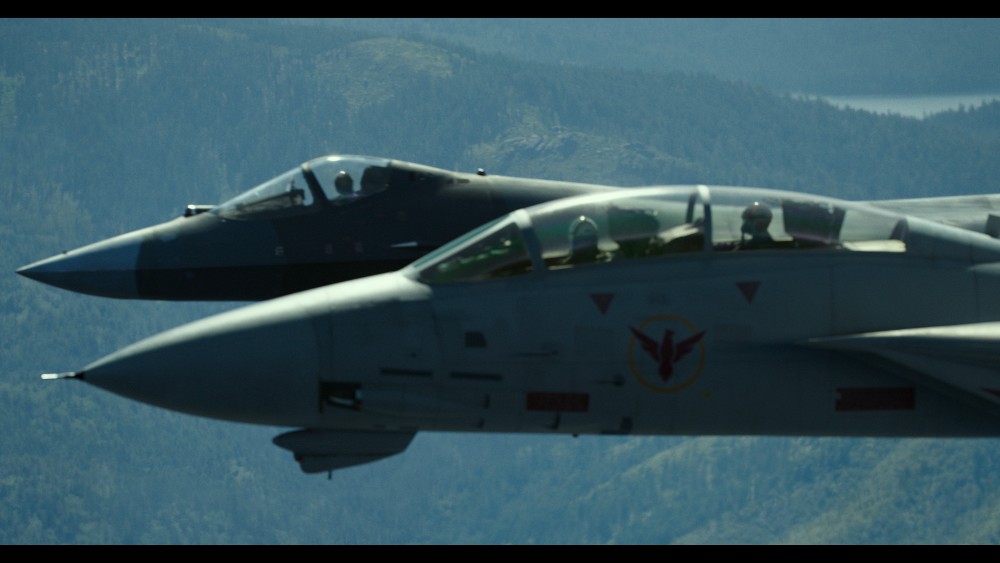
BTL: Before we talk more about the visual effects for Top Gun, I’m curious about your own background. I know you were based at Atomic Fiction for a long time, so what were you doing over there that got you into that world?
Tudhope: I was one of the co-founders of Atomic Fiction, one of the owners of that company. My buddy and I, Kevin Bailey, founded it. 2009-2010 is sort of when we launched it in the San Francisco Bay Area. We grew that company, both there in the Bay Area, and also in Montreal, where we launched a Canadian studio. We also had some offices in Los Angeles, and I think it was around the beginning of Top Gun [that] we sold the company to Deluxe, which also owned Method Studios at the time, so then we became part of the Method Studios family. Recently, the film group within that has been acquired by Framestore, so we’ve become Framestore now. In a lot of ways, I’m still working with the same team that I helped build, and now, we’re part of a much bigger team that has a great legacy. It’s a great opportunity to continue those relationships.
BTL: Is it safe to assume that you worked with a lot of those houses on Top Gun: Maverick?
Tudhope: We were awarded the work as Atomic Fiction, and then that transitioned to Method Studios during the production. One of the things I’m just incredibly proud of [was] our team at that company, who helped us build it into the company it was, [and] to be able to work on something [that] amazing was a real incredible feat. Under the Method Studios banner, they were our lead vendor on Top Gun and came on right at the beginning. They were responsible for all the digital jet assets, really defining the look of the key sequences, [and they] really held down the Darkstar sequence and much of the final battle.
And then, we brought on board MPC as well, who, in [a] great partnership, jumped into grabbing those assets and getting them into their pipeline. They did a bunch of work in conversions of, for example, the F18 to the Tomcat, when we did our cockpit photography of Maverick and Rooster in the cockpit, and they did the Tomahawk missile launch, a bunch of hidden stuff that you wouldn’t know about, like adding snow and rain out[side] of windows and various composites.
Those were our two lead vendors, and then, we also had Lola VFX, which did a bunch of monitor comps, one of our big 2D partners on the film, and then Blind Ltd, out of the UK, which handled all the graphics, which were significant in this. They handled all the heads-up displays, so anytime you’re looking through the POV or the front of any jets in the film, you’re seeing their graphics work, which was very specific and detailed. Every airspeed and altitude and every graphic you’re seeing is all true to what the jet is actually doing at that point in the story.
I think even more complex was all the work that they brought to the table in terms of visually telling the story of what this mission was going to entail, as the jets had to go through the various training missions and ultimately prepare for the final mission. That was our team, and then we had an in-house team as well. That consisted of our previs team, which became our post-vis team, and then also an in-house team that handled a lot of the opticals and respeeds and [the] camera shake and all the various things that were required of them, too.
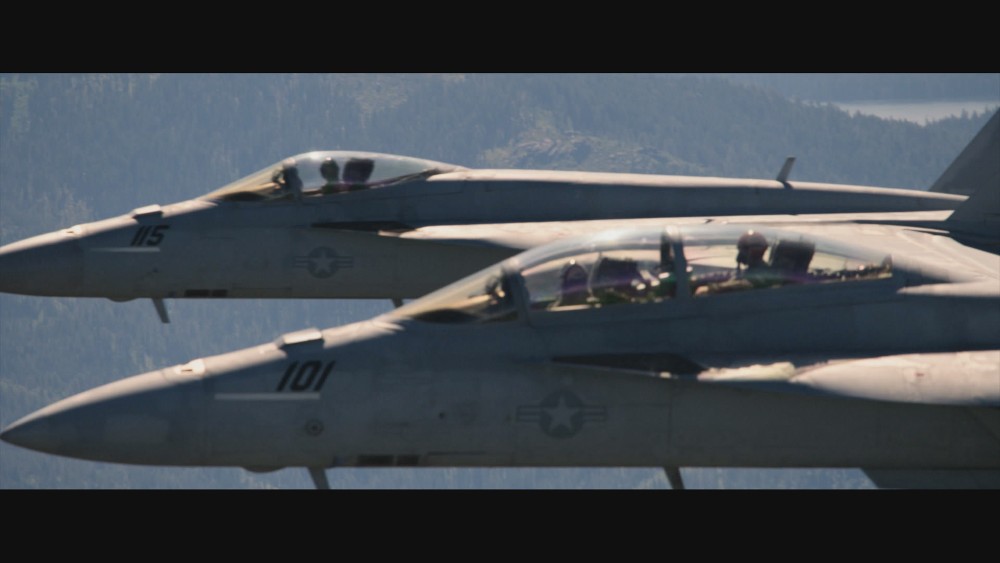
BTL: I’m glad to hear that last part. I think most laymen would think VFX is just used for creating giant creatures or Marvel movies, but when I spoke to the VFX Supe for the Lord of the Rings series, he told me about the company they used just to create those maps that help set up where we are in Middle Earth.
Tudhope: Jason Smith, I’ve worked with him. I love him. It’s all part of the story. For us, across all of those teams, and all those departments, this was a supporting visual effects movie. We set out from the very beginning to create invisible, seamless work that audiences would hopefully walk out of the theater and not realize [was] there at all. That was the goal. Whether you’re having a jet explode in front of the camera, and people ejecting out of SU57s as they crash into the mountain, or whether you’re doing something that’s ultra-supporting, like adding a little bit of snow to the background to try to make the scene have a different feeling, all of that has that same bar of you wanting it [to] not be a thing. You don’t want to think about how it was done. You want the story to play, and you want that to be the thing the audience was left with. So that was our goal.
BTL: I should congratulate you on your Oscar nomination, because as you probably know, supporting VFX are rarely noticed or nominated by the Academy.
Tudhope: It’s super-humbling, and in this category, it’s such a team effort. There are 1000 people that deserve that recognition and were part of making that happen. There are so many people that we have to thank. It all starts with Joe, our director, who had the vision for this and really set the tone for how he wanted to make the movie and the methodologies he wanted to employ. Huge credit goes to all those people.
BTL: We have to give some acknowledgment to Cinematographer Claudio Miranda, who really should have gotten an Oscar nomination. I guess voters assumed that the actors were all setting up their own cameras, but I assume Claudio wasn’t in one of the camera jets either.
Tudhope: He’s a great friend, and I’m just constantly blown away by his ability to pull all these different resources together and work with Sony on the camera equipment and work with the Navy on getting all of these cameras mounted inside the jets — on the exterior and on the interior. It was his and Joe’s foundational elements of the film, sort of the style of the movie, that we carried to all the stuff that we did. There was a language they created with these mounted cameras inside the cockpits and on the exterior that we matched and carried into the Darkstar sequence at the beginning of [the] film. When our CG jet is up at 60,000 feet, we still honored the practical stuff we were doing by placing cameras in places where you would really mount them and by trying to carry that creative throughline across the entire film, because it was a huge part. Also, when we get to the shots where we have actors [who] needed to be flying in the cockpit of a Tomcat, that was one of the primary reasons why we chose to film them in an F18, and then change that F18 into a Tomcat around them.
It provided all the same benefits that Claudio Miranda had established in the other sequences. Because of the amount of light that’s up there in the sky, you have a fairly small aperture, so you get really great depth of field [and] really sharp backgrounds. You get all of the lighting characteristics that you would up there. Obviously, you get the same mount positions that the audience has grown used to seeing and that are real. There are so many benefits [to] that. Anytime we had the chance, we would honor those practical elements, because [that] was the language of the movie.
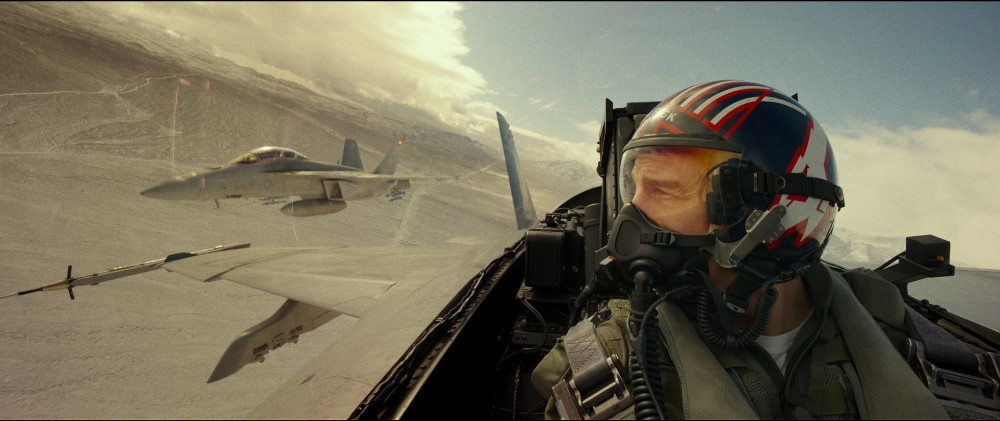
BTL: Were you on set the whole time and doing those two-hour meetings I keep hearing about?
Tudhope: Yeah, all the meetings we did in the briefing rooms before and after all the stories that they flew, it was an incredible experience. We were out on the aircraft carrier for seven nights, which was another experience. It was just an opportunity of a lifetime, honestly, being embedded with the Navy and getting to know those men and women. I think we were more enamored with what they were doing than they were of us, but it was definitely a mutual appreciation. I think you also see that on the screen, because… this was the other secret weapon, I think for everyone, but I’ll speak to the visual effects side of it — this access to these naval advisors [who] were so forthcoming and wanted us to create a great film as well.
There were times when we would show them, if we were replacing a jet with, say, an L39 that we had shot, and now, we have a Tomcat that’s doing the maneuver. Now it’s important that we get every flap movement correct, and the fins are inverted in the proper way. The movement of the weight of that jet needs to be figured out a bit because the L39 was a smaller aircraft. I would literally show these rough animations to the pilots we were working with, and they would give us their notes. They’d say, ‘Yeah, I believe that, I buy that’ or ‘This fin would actually do this, this flap would be in this position.’ That constant back and forth and collaboration we had with them was really critical, I think, for us to get the authenticity of everything just right.
Another example of [that level of] detail [was when] we replaced the cockpit of the F14 as Maverick is diving down into one of the valleys. You see the entire front cockpit and all the screens of the Tomcat. What we filmed was an F18, so we had to remove the entire body of the F18 that you see in the cockpit around Maverick, [and] replace that with our digital Tomcat cockpit. Every little graphic and warning light that’s on there, all of that is based on conversations we had with a Tomcat pilot who gave us the documentation of what would actually be there. We even have the frame rate of the graphics on the little green screen running at a [slower] framer rate, because that’s what the computers were capable of back in that era. There’s just all this love and attention across the board that the whole crew put into this, [which] was really empowered by our relationship with the Navy and their support of the movie.
BTL: I assume that many people joined the Navy due to the original Top Gun, so you must have run into quite a few fans of that movie during production, no?
Tudhope: That’s right, and they all grew up with the original movie, and now those that are in leadership positions in the Navy were helping us get what we needed. Like I said, it was an amazing thing. It’ll happen once and that’s it. It’s just one of those things.
BTL: Let’s talk about the Darkstar sequence since that’s a really amazing sequence that really sets the mood for the rest of the movie as you get up to speed with Maverick, pun intended. What was involved with that, including the research, since I would assume you’re now getting into secret government projects?
Tudhope: Yeah, the scramjet engines and all that. It’s analogous to how we did everything on the movie, and there are two components that I’ll dive into. One was, again, that support from professionals. Lockheed Martin was a huge partner in helping design the jet and explaining to us how these scramjet engines would work and what would happen and helped even fabricate the practical jet that we used on location.
When it came to the work that we did, putting Darkstar up into the stratosphere, putting it up to 60,000 feet, we were able to actually get real engineering data from them and spreadsheets that showed the altitude and the curve of what the aircraft would do in certain areas. We literally plugged all that into our shot design. When you’re watching that sequence unfold, you’re seeing things kick in at accurate altitudes and accurate orientations and all that. That’s all driven from real engineering and real science.
The other thing that played into that sequence that I think was really critical across the whole film as well was that we really mixed and matched techniques in order to achieve it in a way that hopefully keeps the audience on their toes and doesn’t give them the same thing over and over again. In Darkstar, [at] the very beginning of the scene, we have our full-scale Darkstar jet, which we had out there on location; that was towed around the taxiways. The visual effects work entailed removing the tow vehicle, so it looked like it was moving under its own power, adding heat haze, extending the engines in the back, because they literally were just holes, [and] creating all the effects that come from the jet itself in that regard.
Then, we get into shots where we filmed a real F18. We have an F18 that stands in for Darkstar, as it peels off and takes off above the runway and starts to climb up into the 1,500 to 2,000-foot altitudes. And then, we move into a world where the environment becomes a full CG representation of what that world would look like, [which] was based on really great reference that one of our supervisors, Seth Hill, the VFX Supervisor at Method Studios, found of weather balloon footage and various things that we found at that correct altitude that just created this beautiful, blue horizon.
A lot of that’s based on real stuff that we found, and then, you have the component of the front cockpit piece of the Darkstar aircraft that we built actually [that] came off, and we were able to put that on one of Scott Fisher‘s gimbals on stage to shoot all the coverage of Maverick inside the aircraft at those altitudes. That entailed some virtual production where we had to design the look of the superheated plasma that starts to form on the nose of the aircraft, figure out what that looked like in advance of filming it, and then program that onto our screens for interactive light.
And then, also shoot those same mount positions and coverage where we had to extend Darkstar from just the cockpit we had and put the world around it, obviously, when it’s up there in the air. There was really a variety of techniques, and that was one of the things that we… I always think that’s an important technique to employ across any film. You just want to mix and match as much as possible, to bring as much practical stuff into the mix as you can, and leverage that multiple approach technique. I just think it works really well.
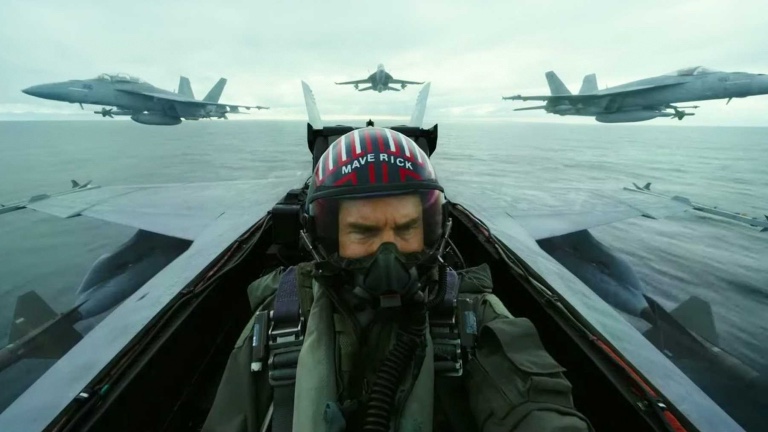
BTL: This might be a trade secret, but did they actually buzz an actor that looked like Ed Harris for that callback to the original Top Gun? Obviously, they were able to do that in the ’80s without visual effects, so I wondered if you were involved in that.
Tudhope: That was actually Ed Harris standing there as an F18 flew over him, and he stood there like a rock. On the other hand, I was cowering behind one of the safety vehicles, because it was loud as heck. That was an amazing shot. That F18, they literally take off in what’s called a high-performance climb, and then they crank the jet up at just the moment to send all of that exhaust basically right on the camera, and in that case, Ed Harris. It just destroyed the set. I mean, it blew all that smoke everywhere, and even the roof of the guard shack came off, which was a set piece we had built, and Joe loved it. We kept that, and obviously, the F18 had to be turned into Darkstar for the final shot, but it’s a great example of that collaboration. That was the real trade secret — whenever we could, we would try to get something for real, and then use visual effects to play a supporting role and augment where we had to.
BTL: I’m not sure there’s ever been a movie like this, where a sequel is made 36 years later with all this access to visual effects that they didn’t have the first time around. It’s just a really amazing accomplishment, and I wasn’t sure if Paramount or the producers were trying to maintain a sense of secrecy around your visual effects, maybe to maintain the illusion that it was all done practically. Is that something you’re able to talk about?
Tudhope: Like I said, we set out to create work that was invisible. Our standard for whether we did a good job was having no one talk about the visual effects. It just felt like this is a movie where it’s not about that. It’s about the story and feeling like you’re walking out of the theater, and you just had a great ride, a great experience. I think the last thing we wanted to do is jump into how we did it, and what that was, because it just wasn’t what it was. At the same time, I think it’s great to be able to talk about it [now] and give props to the team who made it possible and who put so much effort into making seamless work look great. It’s great to be able to acknowledge that stuff.
BTL: You also went right into doing Spiderhead with Joe, which is a very different movie than Maverick.
Tudhope: Yeah, totally different film, right? But also super fun. [It’s] really humbling to be able to work with such great people, obviously.
BTL: I was surprised because I think it came out only a few months after Top Gun, and many people were like, “Where did this movie come from?” since it felt a little out of the blue.
Tudhope: He was telling me he was embracing the chaos of having two movies released right on top of each other, and all that goes along with that. So, huge props to him for doing that. Obviously, Top Gun was not meant to come out this last year, so we worked on it for about two years from 2018 to 2020, which was obviously a while ago.
Top Gun: Maverick is now streaming on Paramount+ and available to buy or rent on all major VOD/digital platforms, as well as on Blu-ray and DVD.





